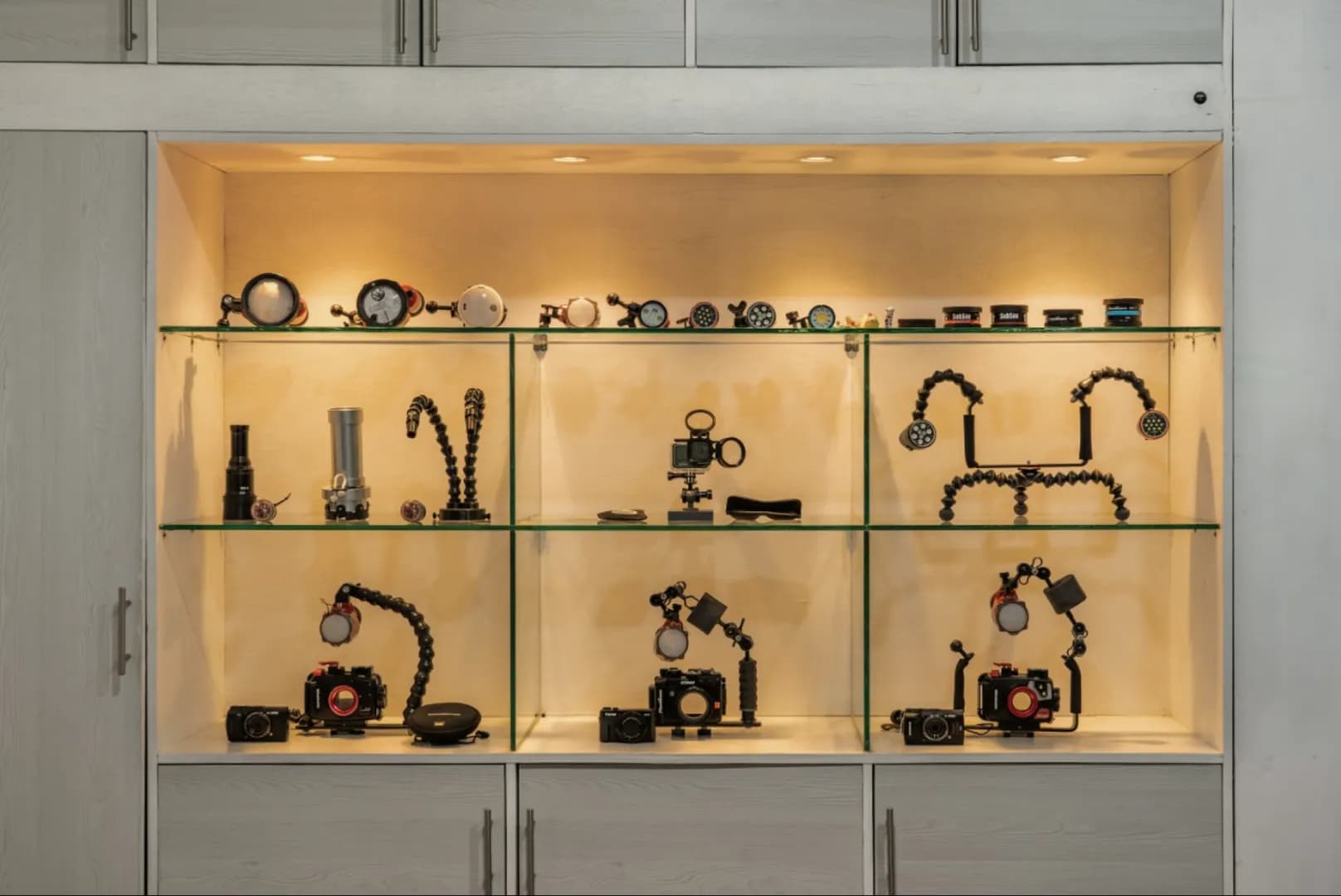Wide-angle Underwater Photography at Lembeh Resort

Lembeh is not only macro! In this article, we dive into how to take close focus wide-angle images in the Lembeh Strait. Let’s dive in for a deeper look…
Dive Sites for Wide-angle Photography
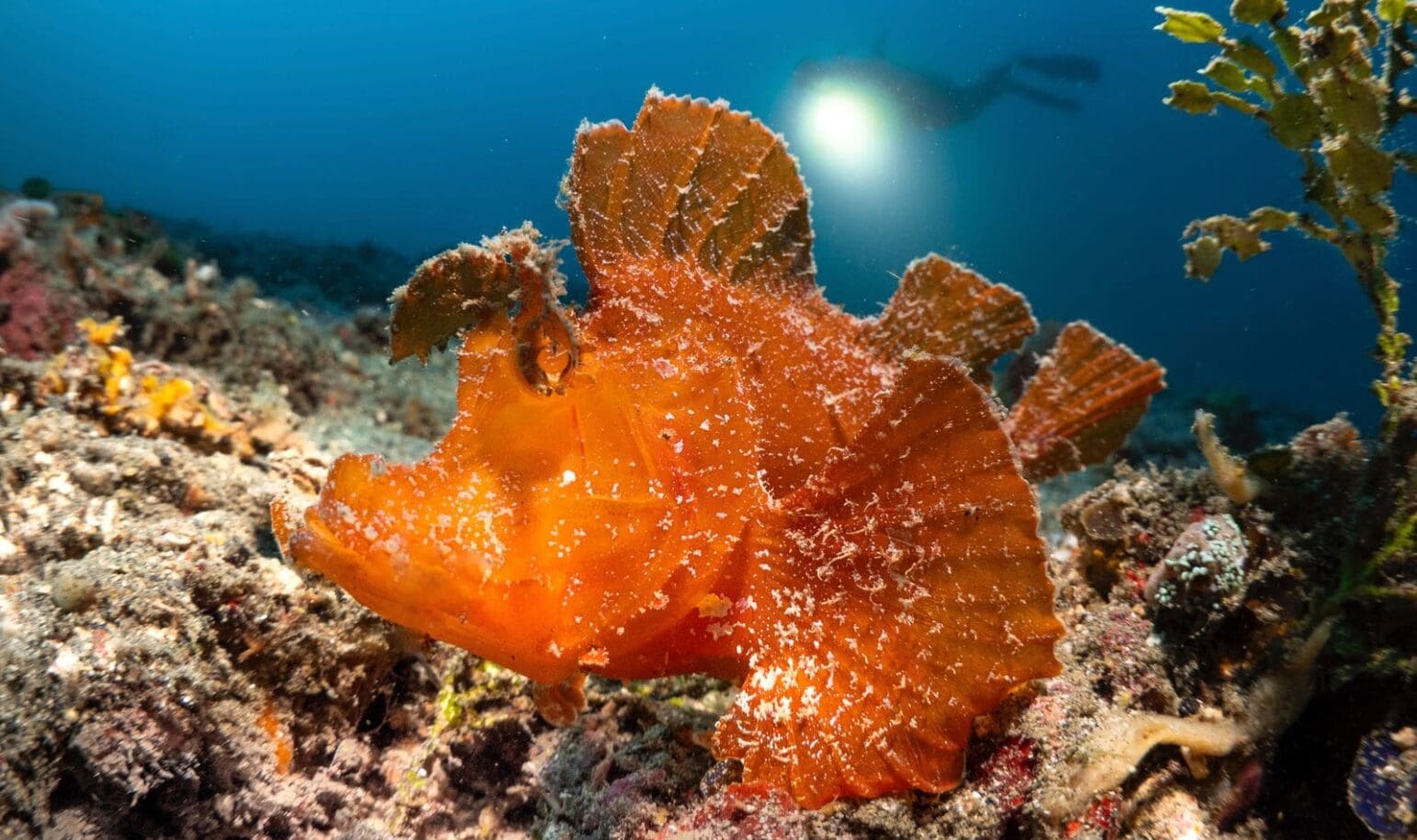
When diving with a wide-angle lens and shooting close focus wide angle, you want to get the most of it so dive site choices are important. Some of our sites lend themselves to this technique better than others. Coral and coral/sand combination sites work phenomenally well.
In Lembeh combination sites such as Nudifalls and Nudi Retreat are excellent, as are the reef dives at the North end of the Strait, around Bangka Island and on the east coast of Lembeh.
The Right Subject in the Right Place
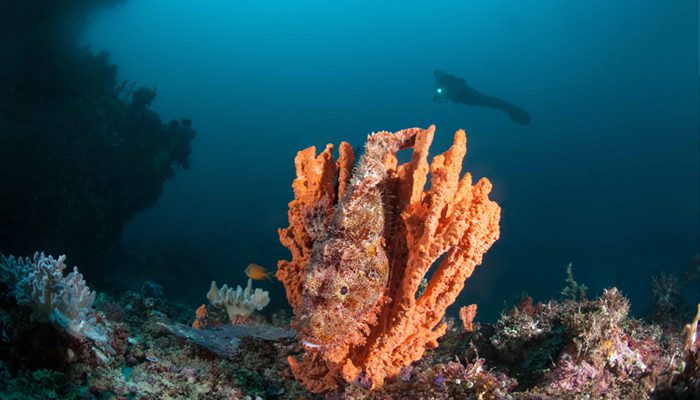
When shooting close focus wide angle you need a subject which will allow you to get close without it swimming away. Trying to find the right subject in the right place can be the most challenging aspect but it’s also what makes these kinds of images even more rewarding when you get them right. It’s best to choose a subject that is positioned off the ground, and preferably in an attractive setting – such as sitting on a coral. Subjects which are sitting on the ground are not ideal as it means you will also capture a lot of the ground in your shot. If you do find a good subject close to the ground, get as low as possible and try to shoot slightly upwards to separate the subject from the bottom.
Read more: The Best Time for Diving in Lembeh Strait
Images Composition
When you do find the right subject, it’s important not to take a “regular” wide-angle shot. In a regular wide-angle image, the entire image feels like a whole. In a close-focus wide-angle image, there should be a 50/50 feel, between the subject and the background, almost like when looking at a split image. The idea is to capture a macro critter as the subject with a contrasting wide-angle background that invites the viewer to explore the habitat in which the subject was found – it’s this contrast that makes the image eye-catching to the viewer.
Wide-angle Image with Fish Eye Lenses
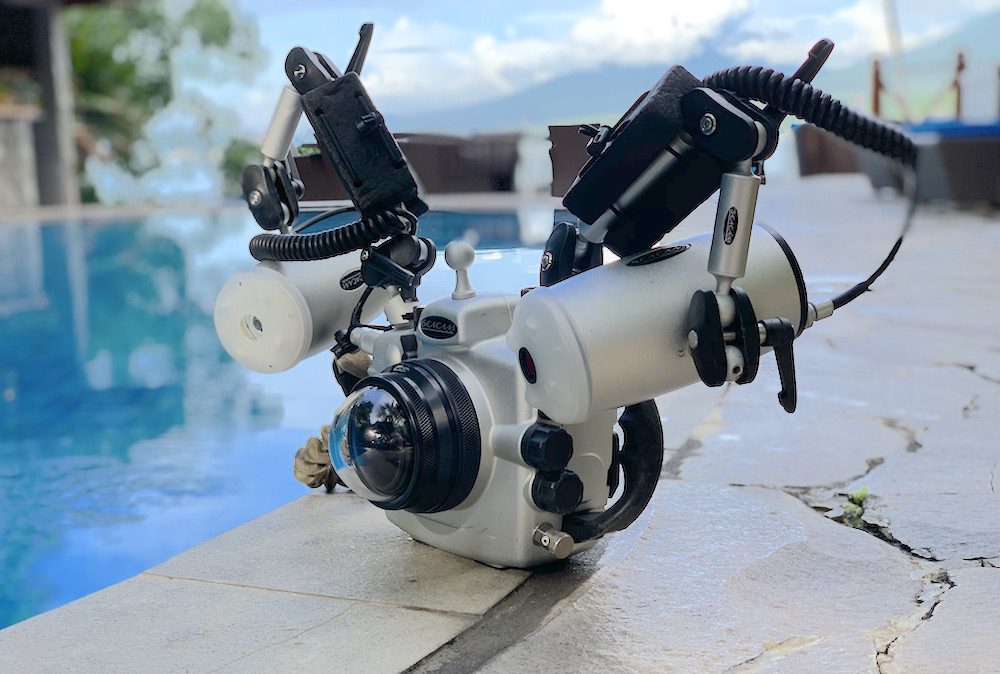
Tobias Friedrich’s Seacam rig with mini dome port
Close focus wide-angle shots are typically taken with a fish eye lens and dome port. Sometimes a teleconverter is used with the fisheye lens to further magnify the foreground subject. When shooting close-focus wide-angle using a large dome port makes it difficult to get close enough to the subject. One solution is to use a mini dome, as this will allow you to get close to your subject while still shooting a wide angle image, even focusing just centimeters in front of the lens. Be aware that mini domes tend to produce softer corners than larger dome ports, so smaller apertures are often required to maintain image quality.
Another solution are extended macro lenses such as the Laowa probe lens or the Nauticam EMWL wet lens.
Close Focus Wide-angle Lighting
Lighting can be tricky when shooting close focus wide angle as you are so close to the subject. Mini domes help with this by allowing you to pull your strobes in closer to the housing. Keep your strobes tight/close to the housing and a little bit back so light your strobes’ light cones actually hit the subject. Diffusers help soften the light over the subject, but also tend to light up more backscatter in the water. Try shooting both with and without diffusers, and remember that some backscatter can be removed during post-processing. When shooting close focus wide angle there are no fixed camera settings. Each image opportunity requires experimentation with strobe positioning and strobe strength until you find the right arrangement for the individual shot. Take a test shot first and then build on it through a series of adjustments.
Read more: Macro Underwater Photography Lighting Tips
Basic Guidelines for Backgrounds
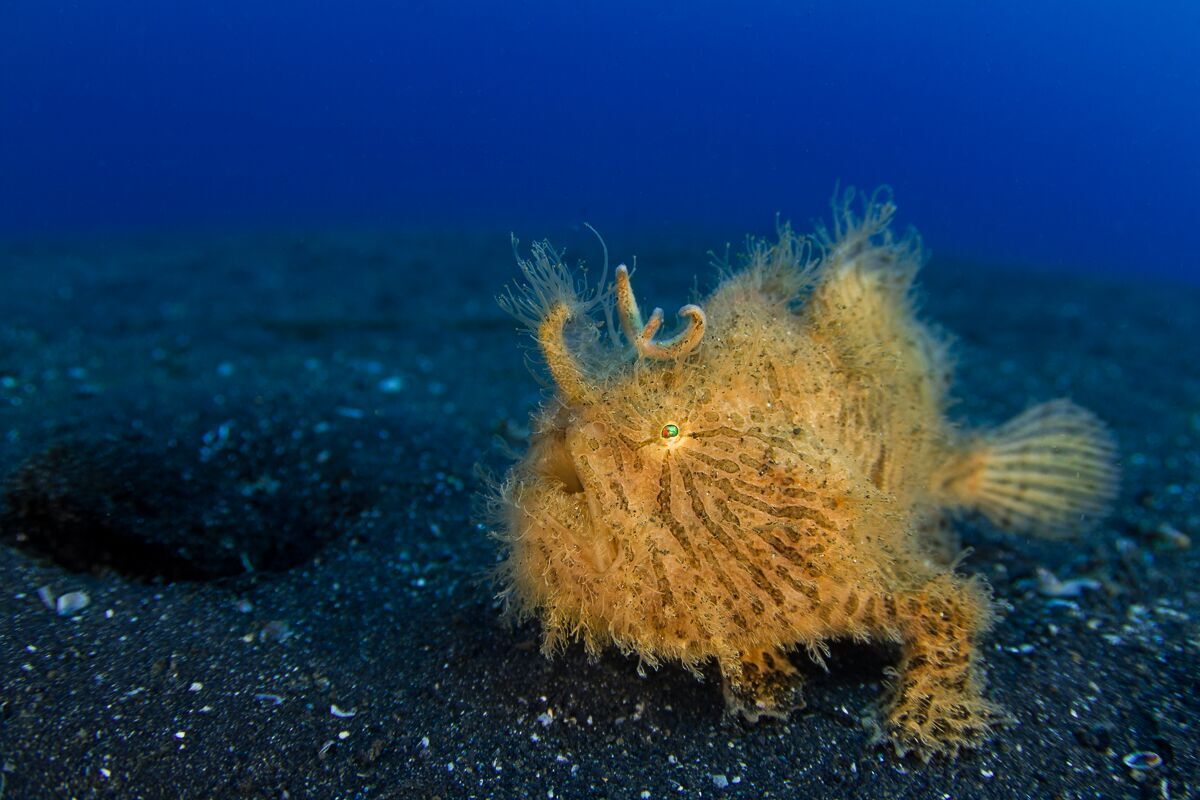
If you are focusing on a close subject with a wide aperture your image will have blurring in the background, which is generally not the aim of a close focus shot. Use a smaller aperture to give a wider depth of field and keep the background in focus. Although the background and the subject should be contrasting, they should also compliment each other without the background becoming distracting from the main subject. Using a model as a silhouette in the background can add human interest to otherwise empty space. Add a torch to the mix and you can create the effect that your model is lighting up the subject!
Favorite Subjects
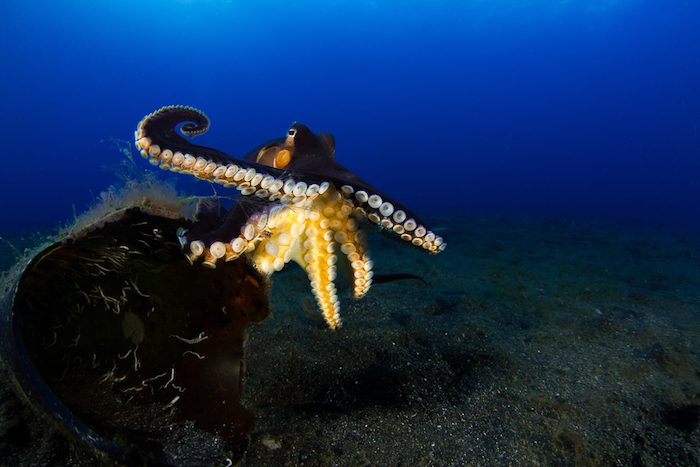
Larger critters could feature in close focus wide angle shots for Lembeh. Photo: Sascha Janson
There is no lack of subject choices in Lembeh for exciting close focus wide angle shots! Some of our favorites include rhinopias scorpionfish, coconut octopus, frogfish (we have more than 8 species), nudibranchs, and multiple crustaceans!
Take a Workshop with Lembeh Resort in 2025
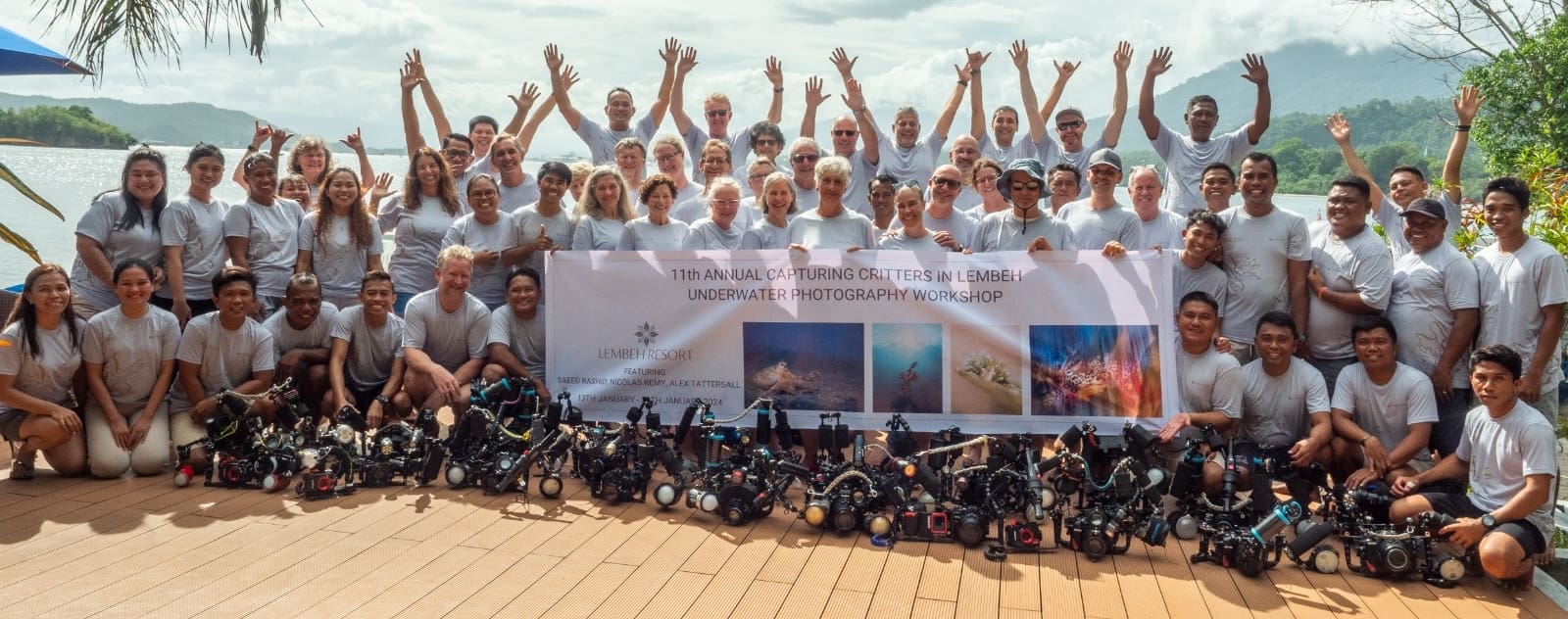
Capturing Critters in Lembeh underwater photography workshop is back in January 2025. We are extremely excited to welcome Ron Watkins (USA), Paul Duxfield (UK), and Renee Capozzola (USA).
Join us in Indonesia for the 12th annual Capturing Critters in Lembeh Underwater Photography Workshop, experience North Sulawesi’s most iconic dive sites, and enjoy some spectacular extras.
Check this link to get detailed information: Capturing Critters in Lembeh UW Photography
Book Your Stay With Lembeh Resort
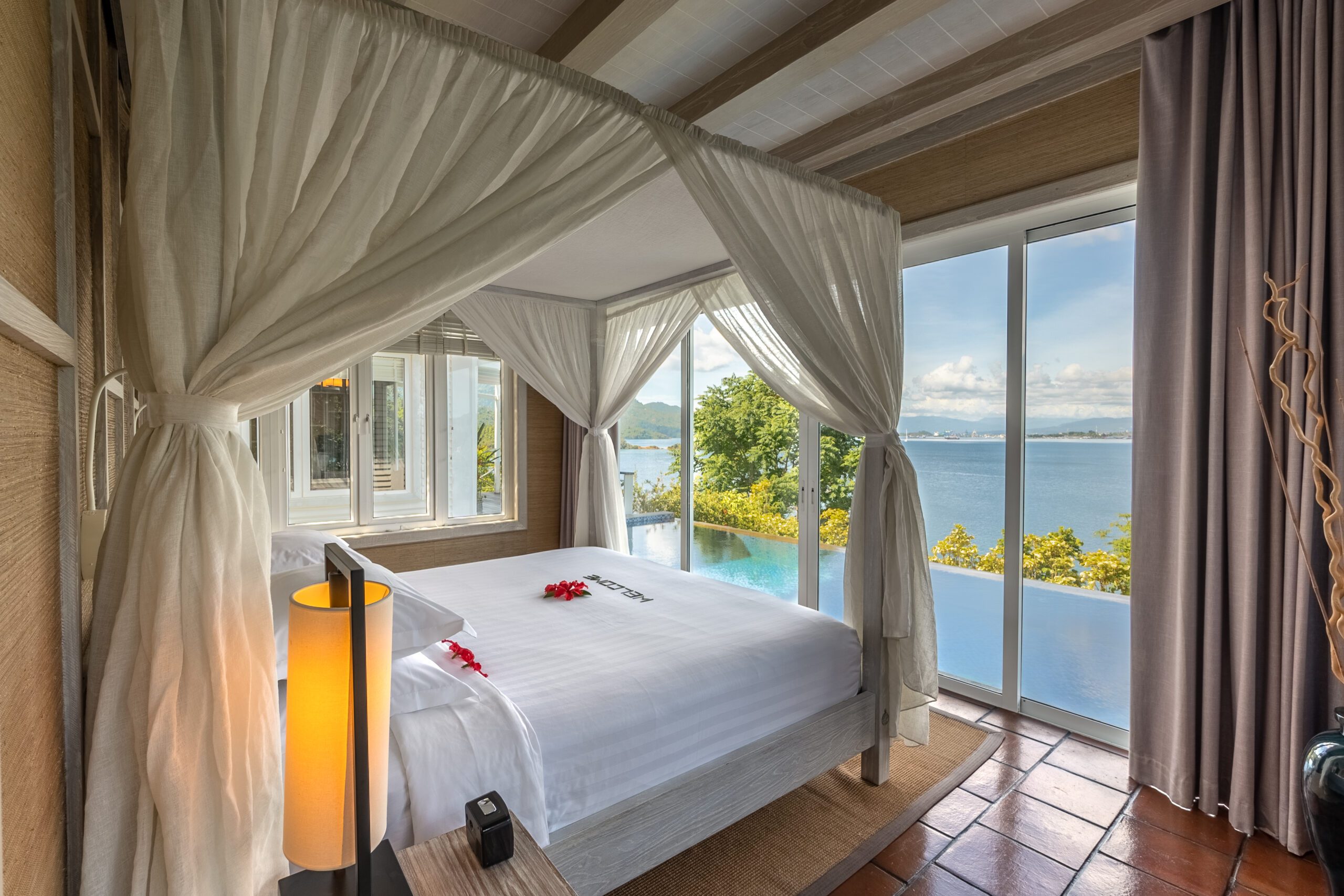
Lembeh Resort Cliffside Villa Bedroom
If you are ready to book your stay with us – or would like more information about Lembeh’s latest rates and availability contact us at reservations@lembehresort.com.
Our reservations team looks forward to assisting you!
Further Reading
If you enjoyed reading this article, you may also enjoy some of our other articles about marine life found in the Lembeh Strait – complete with tips for photographers too!
Pygmy Seahorses In The Lembeh Strait
The Hairy Shrimp: Phycocaris simulans
Colors And Combat: Exploring The Tiger Mantis Shrimp In Lembeh

